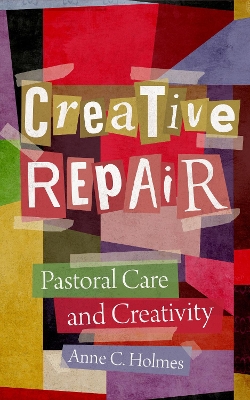There can be no doubt that these recent weeks have been traumatic and testing for the Church of England and for the public face of religion. Two things have occurred that that bear upon the shape, processes and content of this book which make it important for these debates. The first is a serious lack of trust in leadership following the catastrophic failure of the Church to respond to the abuse and criminal violence of John Smyth highlighted by the Makin review. The second is the pressure and fatigue of many of those of involved in leadership and ministry. It is not clear what the direction of travel looks like for those committed to Christian ministry and authentic transformative pastoral care.
It is into this space that I have read this book a second time. The author is a priest and a group psychotherapist. In ten carefully crafted chapters she explores the nature of ‘creative repair’. She is aware of the need for all those involved in pastoral care to consider what well-being and resilience might mean for those who seek to listen and nurture wholeness for others. Balance, creativity, silence, recreation and wisdom are key elements; creative repair and the journey of discovery and learning that the reader is taken on.
Holmes shows her reader how to handle personal experience. She is honest about the way in which life tests us. With a commendable lightness of touch, she shows her reader the range and scope of her professional experience as a clinician. The book is carefully referenced and attends to a process of engagement which invites the reader into a deeper consideration of the way we live our lives. We are introduced to ways in which how we might embrace the emotional and psychological impact of our living.
If this book has been some time in the writing, then the length of its gestation bears much generative fruit. In a world which finds too much security in the cognitive and functional, Holmes leads us out of the comfort we so often find in control of these habits into an engagement with the creative arts. We are shown the importance of paying attention and noticing, of finding energy and colour and creativity as part of a commitment to sensitive pastoral care. The reader is shown the possibilities of what it might mean to be truly human. However, the reader needs to be ready to interrogate comfortable patterns or destructive habits of seeing and doing.
These chapters express of confidence and trust in its reader as possessing a unique ability to handle whatever life might have or will throw at them. Groups, fellow companions and explorers are key to this process. This will require some change and time to forge a commitment to carve out space for such attentiveness. These are part of the tools and disposition that we need to nurture if we are to safeguard against burnout. We all need to interrogate the healthiness or otherwise of what has become routine or even an embedded pattern of our normative behaviours.
Leadership and pastoral care should certainly have health warnings attached to it! The book is clear about unhealthy or inappropriate models of ministry which include a lack of commitment to regular supervision, a failure to set boundaries or indeed feed into and from the idealisation that so often surrounds clerical leadership. Making meaning, story sharing, facing our own vulnerabilities, knowing when to stop and sometimes just making do with what we have got are all elements to developing resilience for leadership.
I read this book as a priest of nearly 40 years having worked in a variety of contexts but specifically in the present overseeing the formation of a new generation of women and men for ministry. There is more work to be done around the institutionalisation of some of our demons. These post pandemic years have left our churches smaller and more fragile. We would do well to attend to some of the core messages set out in strategies and strap lines across the websites of our Anglican dioceses. They can paint a picture that does not correlate with the reality of pastoral work. The constant push for Church growth can be dangerous. This aspiration for recovery and growth often does not match the experience of many hard-working leaders. The geography is uneven and the climate uncertain.
The individual story needs to be contextualised within a wider institutional framework where the language of aspiration does not meet the realities of experience. This can often be at the heart and roots of our anxiety and even depression. It could be that the Smyth crisis offers us all an opportunity to let go of some of these idols and absolutes and languages. It could be that creative repair starts with moving into the slow lane of the motorway where speed and success are not the prime objectives.
This is a book which should be core reading for all those involved in supervision, pastoral support and leadership at whatever level we might find ourselves. Pace, attentiveness, mending, sustainability and realism all the key gifts of this book so insightfully mapped out in the geography of its ten chapters. This is pastoral theology at its best !
Creative Repair: Pastoral care and creativity
Anne C. Holmes
SCM Press £25
(978-0-334-06176-2)

